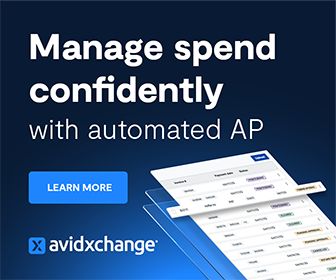Are you an experienced financial professional who has already earned a seat at the executive table? Or are you a talented controller who would like to move beyond the traditional role and demonstrate your strategic value to the organization?
Either way, you’ll need to tap into the power of timely, relevant financial data to support your company’s 2025 strategic planning processes and promote long-term continuity.
For the modern CFO or controller, financial data is no longer just about tracking the past — it’s a powerful tool that can provide a glimpse into the future. Take a look at how to make financial data work for your strategic goals through data analytics, real-time insights, and trend analysis.
Creating a Data-Driven Culture in Finance
Before you can unlock the power of financial data, you have to create a data-driven culture in your F&A department. Encourage your team to go beyond number crunching and explore data to unlock deeper insights.
You’ll also need to equip your finance personnel with tools that allow them to access and analyze data easily. User-friendly dashboards and reporting tools make it easier for team members to unlock insights without needing advanced technical skills.
When everyone on the team can engage with the data, they can provide unique perspectives on developing trends.
Making data a regular part of your decision-making processes reinforces its importance. For example, when you present analytics reports during team meetings or risk assessments, your employees will realize that you value a data-first approach.
Using Data Analytics for Strategic Insights
Data analytics tools have transformed the way finance departments operate, moving from simple record-keeping to uncovering actionable insights. You can go beyond just understanding the company’s financial past by analyzing all of the financial data that’s already at your disposal.
Start by defining the metrics that matter most to your organization’s financial health. These may include revenue growth, profit margins, debt ratios, or cost of goods sold. Each metric provides an important piece of the puzzle.
After you’ve gathered the right information, use predictive analytics tools to simulate various financial scenarios based on historical data.
For example, you can model the impact of different revenue growth rates or economic conditions on the company’s financial performance. These models will help your team create contingency plans for various outcomes with the goal of promoting organizational resilience.
Data analytics also enables more precise budgeting and resource allocation. By examining past spending patterns, you can identify areas where the company can trim costs or invest more to maximize returns.
Leveraging Real-Time Data for Accelerated Decision-Making
The old-school approach to financial reporting involved combing through weeks or months of records to compile graphs, charts, or other reports. While this process has its merits, it is also time-consuming.
Manual reporting processes also slow down decision-making and leave executives with outdated information that is potentially weeks old.
Real-time data has become a game-changer for finance teams. Your department now has access to immediate insights into the organization’s financial status, which it can pass along to the C-suite to facilitate accelerated decision-making.
The company’s executive team can now seize fleeting opportunities without compromising the long-term financial health of the organization.
The ability to access and analyze data in real-time also helps you respond to external factors.
Suppose that a new competitor enters the market or a supply chain disruption impacts your production costs. Through real-time data analytics, you can make quick adjustments to pricing, budgets, or other financial strategies to mitigate potential impacts.
Analyzing Trends for Long-Term Planning
Strategic planning involves looking beyond the next quarter and understanding the long-term implications for your business. By studying data trends, you can identify patterns that inform you where the organization is headed and how to capitalize on future opportunities.
Analyzing historical revenue data can reveal seasonal patterns that impact sales. If certain products or services experience peaks during specific times of the year, you can align your marketing and inventory strategies to capitalize on these trends.
Similarly, identifying long-term growth patterns helps you set realistic growth targets that align with market conditions.
Tracking cost trends has become especially important. It helps you understand how factors like inflation or supplier price fluctuations affect your bottom line.
For instance, if raw material costs have been steadily rising, you may decide to explore alternative suppliers or negotiate contracts. Staying ahead of negative cost trends can help your business maintain profitability, even in times of economic uncertainty.
Ready to Position Finance as a Strategic Partner?
Financial data holds the key to transforming your F&A department into a true strategic partner for the organization. By reshaping the culture among your team and equipping them with the latest analytics technologies, you can guide your organization with a level of precision and foresight that would have been unimaginable a few years ago.




